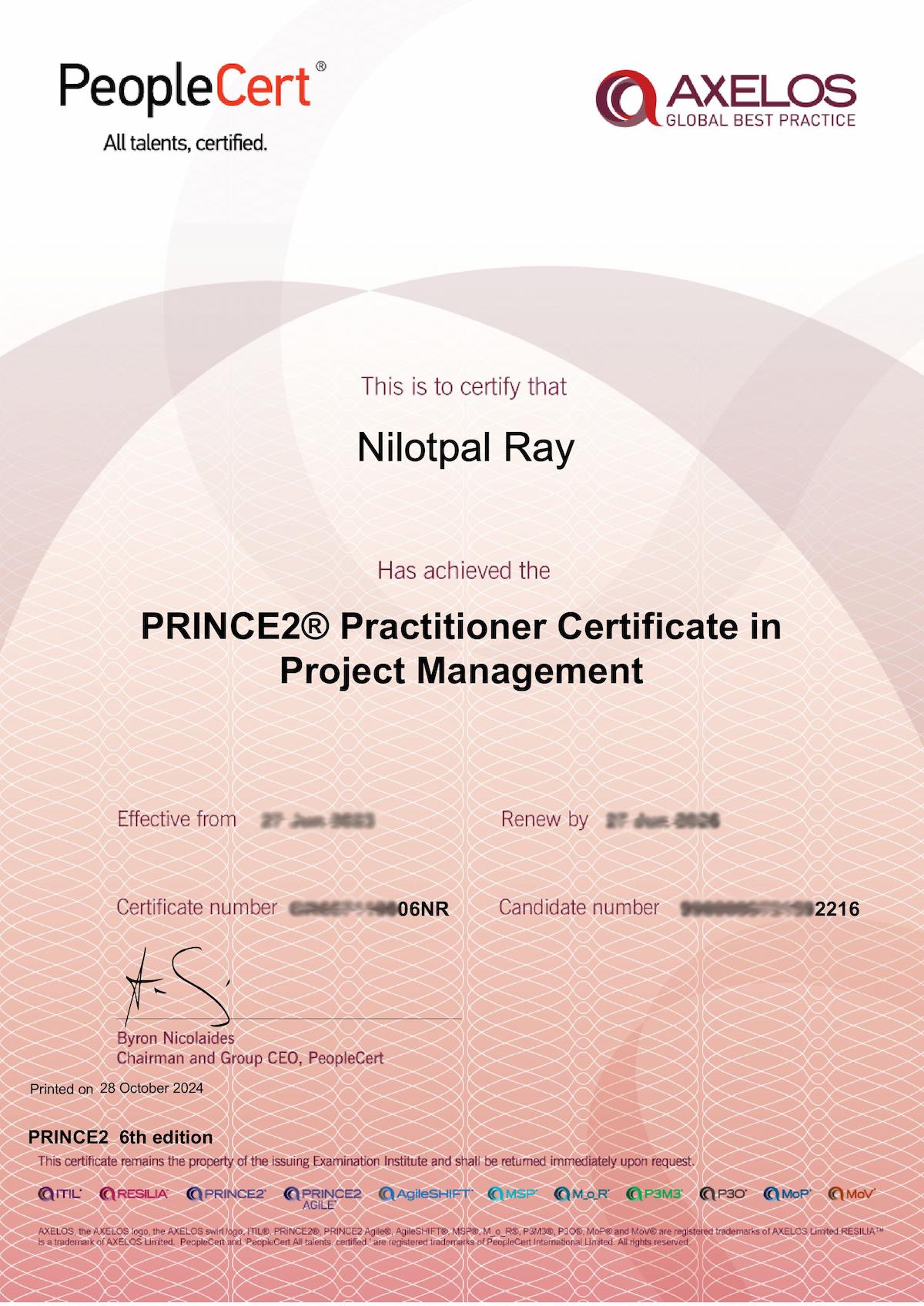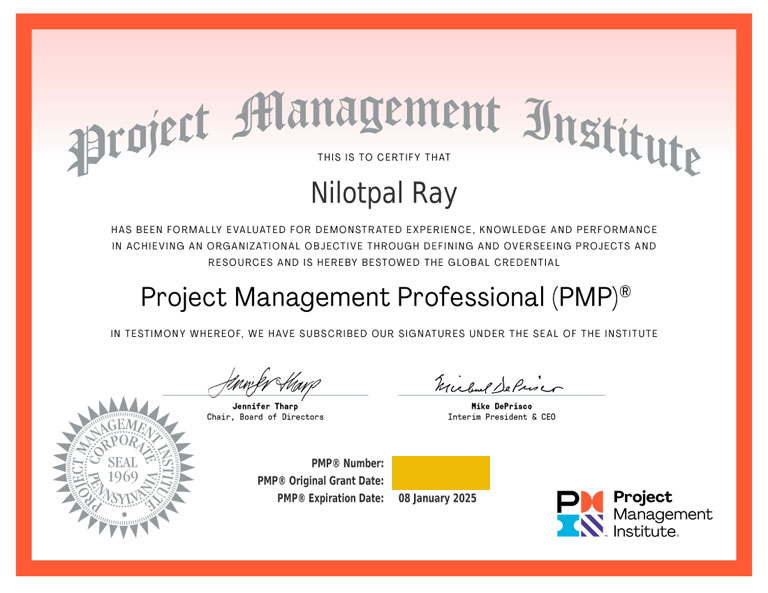From Founder's Pen
Nilotpal Ray
Hi, I am Ray. I believe anybody can become a great project manager with the right coaching and mentorship.
I am a PMP® and PRINCE2® certified project manager with 15+ years of experience in leading & directing projects in the Public Works, Healthcare, FMCG and Power Utilities industry. Currently I am working as a Programme Manager in London, UK. I am passionate about Project Management and I believe that the PMP Certification Exam teaches you to become a better project manager. Hence, I help aspiring PMP candidates to achieve their dream certification via self-study, guidance and mentiorship. I have passed the PMP Exam studying all by myself and I know you can do it as well. The PMP certification made me a better project manager...above anything else.
My Motto: You can’t teach what you have learned, you teach what you have DONE! 😊
My LinkedinWhat everyone is saying….
My BEST-SELLING Courses on Udemy

PMP Certification Exam 35 PDU Training Course
The MASTERCLASS to pass the PMP Certification Exam | Aligned to PMBOK 7th Ed. and 2025 syllabus | 35 PDUs for your PMP Certification Exam
- 35+ Hours
- Doubt Clearing
- Self-Paced
PMP Exam-PMI New Format 2025 Mock Simulator (PMBOK7 Updated)
PMP Certification Exam (PMI) 2025 Simulator | Questions from new PMBOK 7th Edition | Questions on AGILE/HYBRID/PREDICTIVE | Get 10 PDUs for your PMP renewal
- 380+ Questions
- Easy to access from anywhere
- 22,364 Students


Project Management with Earned Value Management (EVM) 9 PDUs
Project Management with Earned Value Management | Earned Value Management for PMP Certification | EVM with MS Project | Get 9 PDUs for your PMP renewal
- 3+ Hours
- 4261+ Students
- Lifetime access
Project Management Basics for Project Managers - 16 PDU/CPDs
Learn the basics of Project Management as a Project Manager | Earn PDUs/CPDs for PMP/PRINCE2 | Microsoft Project Basics
- 17+ Hours
- 150+ Students
- Easy to access from anywhere

Visit my Project Management Blogs
Get in Touch
Got a question, project idea, or just want to say namaste? I'm all ears! Whether you're looking for guidance, collaboration, or just a quick chai chat about project management, I’m just a message away.


















